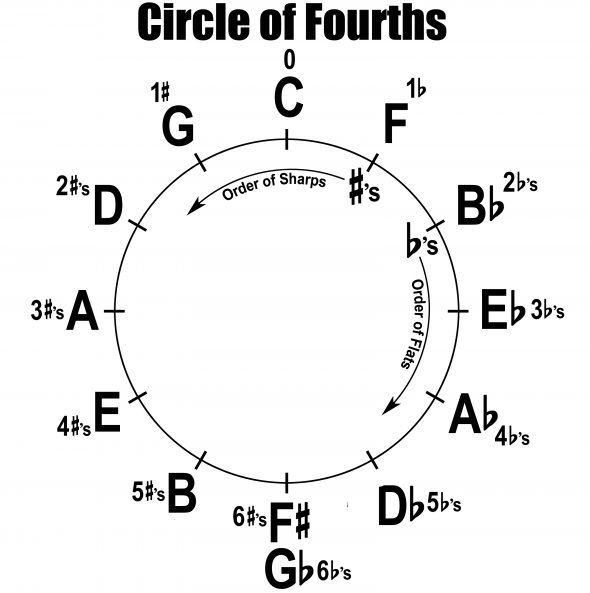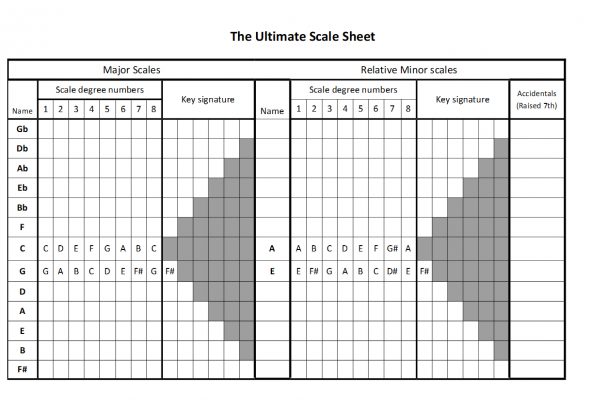Learning Your Keys
Sometimes it can be confusing remembering which sharp is in which scale and what changes in the melodic minor when descending… Here are a few things I have found help speed up the process when teaching.
The Circle of 4ths
It makes more sense when you can see the big picture of how scales are arranged, rather than just learning isolated scales for an exam. There are only 12 keys, so I use the twelve positions of the clockface to show their relationship. Each ‘hour’ is the interval of a 4th.
Starting at 12 o’clock I draw C, then count up the interval of a 4th: C, D, E, F. So F goes at 1 o’clock. The fourth note of F major is Bb (F, G, A, Bb) so it goes at 2 o’clock and so on until we reach Gb at 6 o’clock. I also write the enharmonic of Gb (F#) so it is easier to count the next interval at 7 o’clock (F#, G#, A#, B). If you are counting correctly, you will find yourself finishing back at 12 o’clock on C!
If you look on the right-hand-side of the clock, they are all the major scales with flats in the key signature. Add one flat for each o’clock it is clockwise away from C.
If you look on the left-hand-side of the clock, they are all the major scales with sharps in the key signature. Add one sharp for each o’clock it is away from C going counter-clockwise.

If you are finding it hard to remember all the note names in order, look for the word ‘bead’ being spelt (it’s there twice!).
The Order of Sharps and Flats in the Key Signature
There is a pattern to how the symbols in the key signature appear. They actually follow the cycle of 4ths! The sharps are in order from F going counterclockwise (F#, C#, G#, D#, A#, E#, B#) and the flats are in order from Bb going clockwise (Bb, Eb, Ab, Db, Gb, Cb, Fb) with the last two being enharmonics.
It’s always good to have a few ways to remember things, so I also teach my students the following mnemonics.
#’s Father Charles Goes Down And Ends Battle
b’s Battle Ends And Down Goes Charles’ Father

The Ultimate Scales Sheet
The following chart was shared with my by an excellent theory teacher, Leanne McCartney. At the start of the theory lesson she has students fill the chart in for the scales they need to know and finds it helps them see the patterns in a different way. It can be adapted to suit any scale mode. You can download a printable version here.

